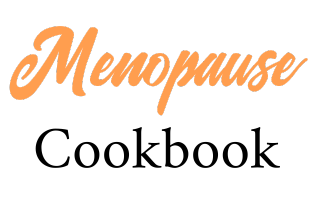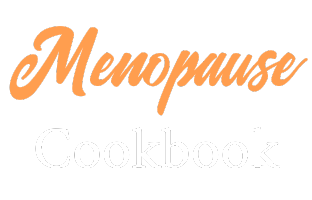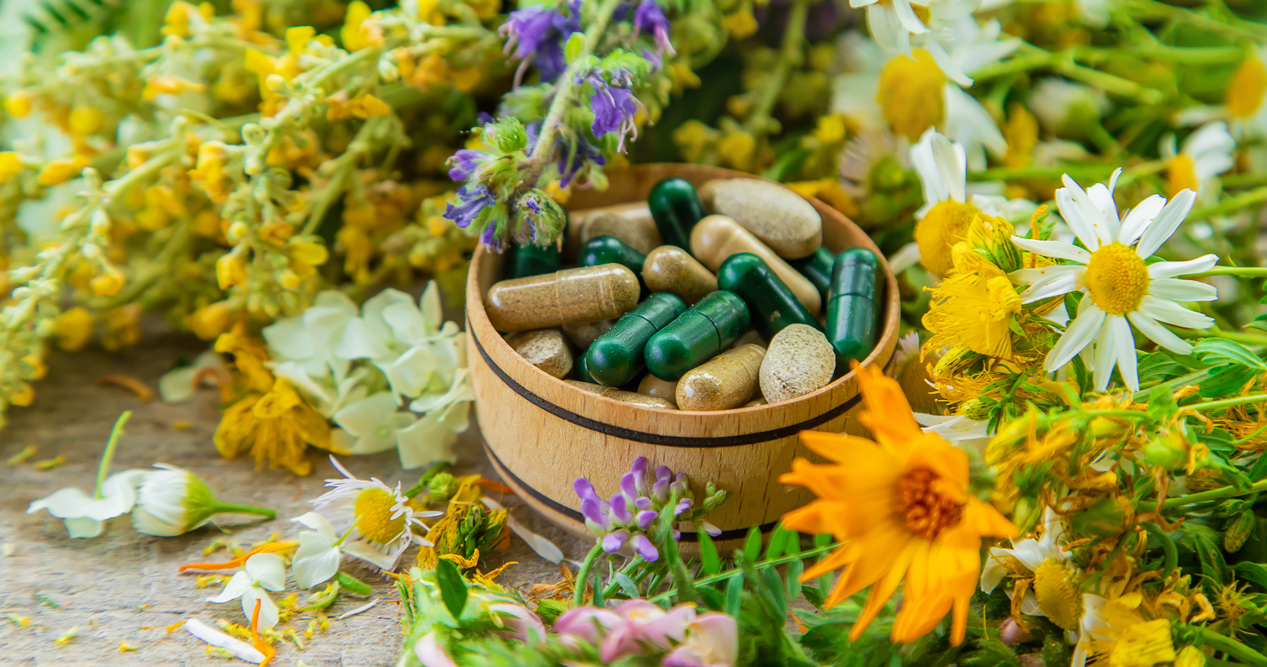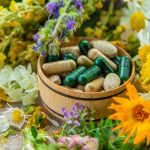The panel:
Alina Hornfeldt, Co-owner, Mastel’s, St. Paul, MN, www.mastels.com
Holly Prugar, Supplement Manager, The Mustard Seed Natural Market, Watertown, NY, www.themustardseedonline.com
Nichole Petersen, Marketing Director, RidgeCrest Herbals, Salt Lake City, UT, www.rcherbals.com
Ramona Billingslea, Marketing & Education Manager, Betsy’s Health Foods, Spring, TX, https://betsyhealth.com
Rob Brewster, President, Ingredients by Nature (IBN), Montclair, CA, https://ingredientsbynature.com
Sevanti Mehta, President, Unibar Corporation, Houston, TX, https://unibarcorp.com
Here’s what industry leaders are saying about the herbal and botanical space in 2025.
The herbal and botanical products market is facing various challenges and opportunities. While consumer demand for health products is driving substantial growth, concerns around adulteration and traceability are prompting suppliers to invest in studies and certifications. As consumer confidence in herbs and botanicals continues to grow, retailers and finished-product brands can take advantage of increasing demand for herbal solutions by supplying consumers with trusted products that work. Vitamin Retailer (VR) asked a panel of experts for their insights into the herbal and botanical market, including current business concerns, emerging research worth watching, and trending ingredients.
VR: What’s the state of the herbs & botanicals market right now?
Prugar: The herbs and botanicals market is growing rapidly. Customers are coming in asking for herbs like turmeric and ashwagandha daily.
Petersen: The market is currently growing and is projected to continue expanding over the next decade. We’re seeing more botanical ingredients used in functional foods and wellness products, driven by rising consumer interest in natural solutions for things like immune support, stress relief, longevity and proactive health care.
Billingslea: The market continues to grow and is an exciting area of opportunity for growth. Besides whole herbs and extracts, suppliers continue to create patented ingredients that seem to show even more potential to help people. Customers continue to be interested in and open to herbs and botanicals, as well.
Brewster: The global botanicals supplement market was valued at $27.47 billion in 2020 and is projected to grow at a compound annual growth rate of 9.1 percent through 2028, reaching an estimated $55.18 billion, according to Grand View Research.
Mehta: Post-pandemic, everything plant-based has been booming; the herbs and botanicals market is no exception. In fact, the global ayurveda market size, which includes herbal ingredients, was estimated at $14.4 billion in 2023 and is projected to grow at a CAGR of 27.2 percent from 2024 to 2030. In the U.S., nearly $1 out of every $5 spent on supplements is on herbal and botanical-based supplements, many of which are rooted in ayurvedic wisdom. The herbs and botanicals found in ayurvedic medicine are gaining popularity primarily because consumers are seeking side-effect-free alternatives to pharmaceuticals, and there is an increased interest in wellness, clean-label products, plant-based healing and a general emphasis on prevention.
VR: What is the state of consumer confidence in herbs and botanicals?
Hornfeldt: Consumers have a lot of confidence in herbs and other botanicals. I think they feel that (these products) have fewer side effects than over-the-counter remedies, and they appreciate the notion of a natural product. We have a lot of younger new employees who are taking herbalism classes and apprenticeships, so I think we will see the interest in herbs continue!
Prugar: Customers are seeking out herbs to improve their daily health.
Petersen: Overall confidence in supplements remains high; 87 to 91 percent of U.S. adults trust their safety, quality and effectiveness, according to recent data. These numbers are on par with or even above pre-2020 levels. However, there’s room for growth in education: Only about 10 percent of consumers say they’re ‘very familiar’ with various herbal traditions, and transparency remains a top priority for many.
Billingslea: Customers are willing to try herbals and botanicals. The fact that they keep coming back for these products speaks to their efficacy and value. I think social media also plays a role in more customers being interested in and open to these products; watching videos and looking at things other people post leads people to come in and ask us about this information. We appreciate the opportunity to ask the right questions and help our customers get the product that will hopefully help them meet their health goals.
Brewster: When it comes to consumer confidence, the market is speaking for itself as it continues to grow. Shoppers have more trust in natural supplementation and often choose it as the first line of defense to support their personalized health goals. Consumers, from Gen Z to Boomers, have a general sense that herbs and botanicals can offer significant support, particularly those that are backed by human clinical research. However, when it comes to the herbs and botanicals market, adulteration does become a part of the conversation, but many organizations and ingredient suppliers are doing their due diligence when it comes to supply chain transparency and clinical backing. Interestingly, Nutrition Business Journal reported that 85 percent of general consumers stated that third-party testing was one of the leading influences in their purchase decisions, with 38 percent stating it was extremely or very influential.
Mehta: There is a significant shift happening right in front of our eyes within the herbs & botanicals sector. If you look back two years ago, only 38 percent of consumers believed that herbal supplements were safer than over-the-counter (OTC) or pharmaceutical products. Today, that number is up to 66 percent. Recognizing the growing demand and increasing consumer confidence in alternative medicine, Unibar recently launched EyeVedic. The EyeVedic line includes proprietary ingredients like CapsiClear and UniGold, alongside SeeXanth and SeeBuck, each carefully selected and standardized to deliver measurable results in key areas of eye health, particularly for dry eye relief, aging-related vision decline, and screen-related ocular stress.
VR: Do you have any recent studies on herbal and botanical ingredients to share?
Petersen: The National Toxicology Program (NTP) is actively investigating the safety and biological activity of several popular herbal ingredients. Ongoing studies include valerian root, commonly used for sleep and relaxation; black cohosh, often taken to support menopausal health; and echinacea, widely used for immune support. These studies aim to better understand long-term effects, potential interactions, and overall efficacy to inform both consumers and health care professionals.
Brewster: Eriomin is our triple patent-protected, award-winning, citrus flavonoid blend. Three published human clinical trials show that Eriomin supports health biomarkers that contribute to healthy blood glucose management, including a natural boost in endogenous GLP-1, increased insulin production, and a healthy inflammatory response.
Sytrinol is our patented blend of natural citrus and palm fruit extracts for heart health. In a randomized, double-blind, placebo-controlled study, Sytrinol showed significant support for healthy cholesterol levels, including healthy LDL levels, a healthy LDL:HDL ratio, and healthy triglyceride levels, in just four weeks.
Mehta: CapsiClear, a flagship ingredient in the EyeVedic platform, is an excellent alternative to artificial eye solutions and tears, supported by multiple clinical trials. In recently published clinical studies, CapsiClear has demonstrated a reduction in intraocular pressure (IOP), improved dry eye symptoms, supported tear regeneration, and reduced corneal inflammation, all without toxicity. In addition, a 12-week human clinical trial conducted at the University of North Texas has demonstrated that a 40 mg/day dose of CapsiClear can improve macular pigment optical density (MPOD), accelerate photo stress recovery, and enhance reading performance under both blue and white light.
VR: What sorts of finished product trends are emerging in herbs and botanicals?
Hornfeldt: Many more people are opening to the idea of tinctures, as they are easy to use on the go and have a fast-acting effect.
Prugar: Many customers are looking for powders and gummies. Powders are easy to add to smoothies and protein shakes, while gummy options are becoming increasingly popular.
Petersen: Many new products are targeting areas like immune support, stress relief, sleep, mood, energy and women’s health. Adaptogens continue to be in high demand, and brands are actively exploring innovative delivery formats to enhance convenience and effectiveness.
Billingslea: I’m seeing more targeted finished products and an increased use of patented ingredients, like KSM-66 Ashwagandha.
Brewster: Consumers are primarily focused on addressing key health conditions, including cognitive function, mood and sleep support, immune health and heart health. Additionally, GLP-1 is attracting attention from researchers for its link to multiple health benefits including blood glucose support, brain health, supporting healthy weight management, and more.
Mehta: One of the key forces driving finished product innovation in the herbs and botanicals segment and the broader supplement space is the consumer’s growing desire to optimize longevity and health span. According to The Wall Street Journal, the longevity industry has attracted over $55 billion in global investment over the past decade. This macro trend is not only fueling the rise of science-forward brands like Elysium Health but also driving innovation across various categories, including cognitive health, cellular health, skin health and vision health.
VR: What sorts of herbal and botanical ingredients are trending right now?
Hornfeldt: Soursop is in high demand these days, as well as butterfly pea flower because of its beauty, mullein for its lung health benefits, and thyme for its anti-fungal properties.
Prugar: Trending herbs right now include ashwagandha, moringa, elderberry, turmeric, cinnamon and berberine.
Billingslea: Mushrooms, adaptogens, nootropics and blood sugar management ingredients are popular in our store; specifically, lion’s mane, ashwagandha, berberine, cinnamon, cordyceps and bacopa.
Brewster: The awareness of glucagon-like peptide 1 (GLP-1) has undoubtedly drawn shoppers into the industry, seeking plant-based, natural alternatives that can also support this hormone and provide its associated health benefits including, but not limited to, insulin release, brain health, healthy weight management and more. One clinically backed ingredient patented for its natural GLP-1 boosting properties is paving a new path: Eriomin. This proprietary blend of citrus flavonoids has been shown to naturally elevate endogenous GLP-1 levels in those with hyperglycemia by up to 22 percent across three gold-standard human clinical trials.
Additionally, our proprietary blend of citrus and palm fruit extract, Sytrinol, has published human clinical data demonstrating its ability to significantly improve three markers of cardiovascular health in as little as four weeks. In these studies, participants experienced reductions in cholesterol levels of 27 percent. As research continues in these gold-standard human clinical trials, we expect to uncover more positive benefits that botanical ingredients can provide for overall health and well-being.
Mehta: In addition to turmeric and mushrooms, we are seeing growing consumer demand for targeted and non-invasive wellness ingredients, as well as botanicals that reduce inflammation and support hydration, like sea buckthorn. Driven by consumer demand and regulatory directives from the U.S. Department of Health and Human Services and the Food and Drug Administration, natural colors derived from herbs such as Hibiscus sabdariffa and Tagetes erecta offer a safe and natural alternative to synthetic food dyes.
VR: What sorts of challenges is the herbal & botanical industry facing right now? What can you tell me about challenges like adulteration, mislabeling and supply chain issues?
Hornfeldt: Adulteration is the main issue. Concerning developments are emerging from Amazon online, as evident in the testing being conducted by NOW Foods, and it’s always people looking to capitalize on a trending ingredient (who are causing problems).
Prugar: One of the biggest challenges seems to be a shortage of some raw materials due to demand. Out-of-stocks are challenging for both our store and our customers.
Petersen: The herbal and botanical industry faces challenges like adulteration, where products are diluted or contain fillers, as well as mislabeling due to similar-looking plant species. Complex global supply chains add risks with sourcing disruptions and lack of transparency. To tackle this, companies are using advanced testing methods like DNA barcoding and improved traceability through technologies like blockchain. Strong supplier partnerships and clear quality controls are essential to maintaining product integrity and consumer trust.
Billingslea: As a retailer, I think supply chain issues are at the top of the list of challenges. Several of our manufacturers have raised prices recently, even though they managed not to during the previous few years when inflation ran rampant. I believe these raised prices are due in part to anticipation of tariffs raising costs and because of the supply chain issues caused by outside forces interrupting transportation of imports. Our biggest challenge when it comes to herbals and botanicals involves safety for customers who are on medications or who have underlying conditions that are contraindicated. We always advise that customers check with their pharmacist or health care provider before beginning a supplement, but we also like to know about interactions whenever possible.
Brewster: Adulteration is a significant issue in dietary supplements. To address this, many suppliers and manufacturers are increasingly focused on sharing their stories of transparency, traceability and sustainability. At IBN, we are dedicated to demonstrating to consumers that trustworthy, clinically studied products will continue to stand out from the rest.
Mehta: Some of the significant challenges the industry faces include tariffs and their impact on production costs, unpredictable weather patterns that lead to supply chain disruptions, and increasing regulatory complexity. At Unibar, we are committed to addressing these challenges directly. In collaboration with our partners, we have diversified our supply chain. Take, for example, our UniGold Lutein production. We work with farmers in Africa and India to source our lutein. This helps us maintain a consistent supply to meet demand.
More frequent weather events have brought sustainability and ethical sourcing to the top of many consumers’ minds. In fact, 65
percent of consumers consider sustainability and ethical sourcing when purchasing herbal supplements. Recognizing this consumer expectation, we at Unibar, along with our partners, are working to leverage more renewable energy to reduce our carbon footprint, reduce water usage and explore ways to incorporate regenerative farming practices.
Adulteration and mislabeling remain pressing issues in the botanicals industry, particularly with high-demand ingredients like carotenoids and exotic plant oils. Coupled with ongoing supply chain instability resulting from tariffs, these concerns underscore the need for trusted sourcing and validated processing. The EyeVedic line meets these expectations with patented and trademarked ingredients that undergo rigorous testing and quality controls. With CapsiClear, UniGold, SeeXanth and SeeBuck, formulators can confidently develop products that are not only effective but also compliant, traceable and aligned with current clean-label and efficacy standards.
VR: Is there anything else you wanted to say?
Petersen: In addition to current product trends, I believe several key factors are shaping the herbal and botanical market today. First and foremost, consumer education and transparency are crucial. Beyond highlighting benefits, brands need to provide clear information about ingredient sourcing and quality testing to build trust and combat skepticism. Also, sustainability and ethical sourcing are becoming non-negotiable. Responsible harvesting protects ecosystems and ensures long-term availability of botanicals, which is critical given supply chain challenges. Navigating the evolving regulatory landscape is essential; companies must stay agile to comply with changing rules around labelling, claims and ingredient safety, which can vary significantly by region. Science-backed innovation continues to gain importance, with more brands investing in clinical research and standardized extracts to improve product efficacy and consumer safety. Personalization is an emerging trend; tailoring botanicals and supplements to individual health profiles through testing and technology is opening new frontiers in wellness. Finally, global herbal traditions are influencing product development. The integration of ayurveda, traditional Chinese medicine, and other systems enriches the market with diverse, time-tested botanical solutions.
Billingslea: Herbals and botanicals have great potential to help people meet their health goals; it’s an exciting category that keeps expanding as our knowledge of these ingredients grows.
Brewster: Ongoing research is essential to support existing claims about botanicals and to uncover additional mechanisms of action. This is particularly important for identifying cross-functionality among ingredients and their synergistic effects when combined. Brand manufacturers will likely introduce new delivery formats for botanical ingredients, catering to different generations and enhancing consumers’ journeys toward better health. The botanical market is not just ready but eagerly anticipating innovative products, including botanicals like Eriomin and Sytrinol, providing natural ingredients as a comprehensive approach to health.VR
Extra! Extra!




